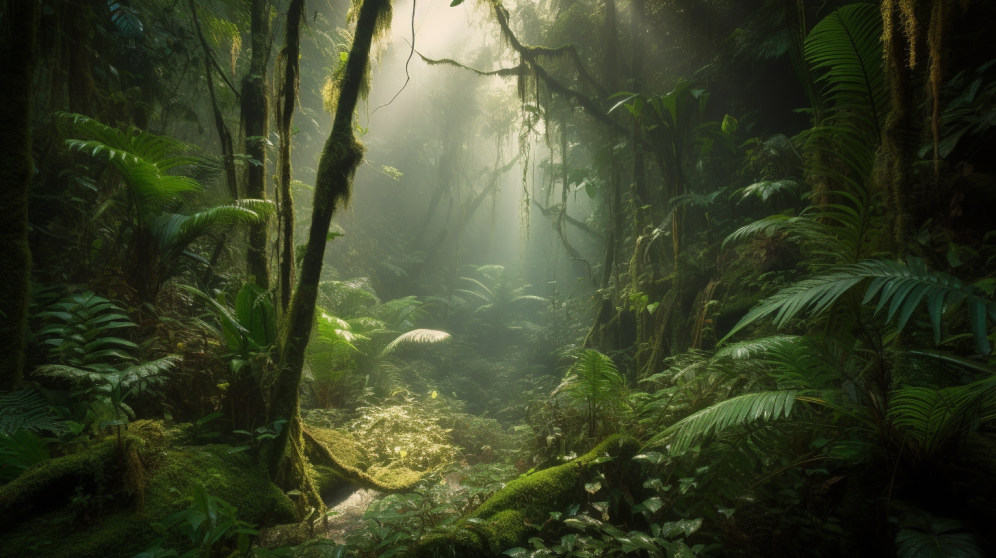Water, the elixir of life, sustains all forms of existence on our planet. Its conservation is not only vital for human survival but also plays a pivotal role in preserving the extraordinary diversity of life found in our ecosystems. In this article, we delve into the profound impact of water conservation on biodiversity and uncover the intricate connections that underpin their relationship.
The Significance of Biodiversity
Before we delve into the interplay between water conservation and biodiversity, let us first understand the significance of biodiversity itself. Biodiversity refers to the variety of life forms, from microscopic organisms to majestic wildlife, that inhabit our planet. It encompasses the rich tapestry of ecosystems, species, and genetic diversity that interweave to form a complex and interconnected web of life.
The Role of Water in Ecosystems
Water is the lifeblood of ecosystems. It shapes and sustains habitats, providing critical support for a diverse array of plants, animals, and microorganisms. From lush rainforests to sprawling wetlands, freshwater streams to vast oceans, water ecosystems harbor a remarkable range of life forms, each uniquely adapted to their aquatic homes.
The Impact of Water Conservation
Water conservation practices have a far-reaching impact on biodiversity. By managing and utilizing water resources sustainably, we can minimize the negative consequences of water scarcity, pollution, and habitat degradation. Let us explore some of the ways in which water conservation positively influences biodiversity.
1. Habitat Preservation
Water conservation efforts contribute significantly to habitat preservation. Conserving water sources such as rivers, lakes, and wetlands ensures the availability of suitable habitats for numerous species. These habitats provide shelter, food, and breeding grounds, enabling the survival and reproduction of a diverse range of plants and animals.
2. Maintenance of Ecological Balance
Water conservation helps maintain the delicate balance within ecosystems. By ensuring the availability of adequate water supplies, we support the functioning of intricate ecological processes. These processes, such as nutrient cycling, hydrological cycles, and energy flow, are essential for the survival of both individual species and entire ecosystems.
3. Protection of Endangered Species
Many species are directly dependent on water bodies for their survival. Conserving water resources plays a crucial role in protecting endangered aquatic species, such as certain fish, amphibians, and aquatic plants. By preserving their habitats and improving water quality, we can help prevent the decline and potential extinction of these vulnerable species.
4. Mitigation of Climate Change Impacts
Water conservation contributes to mitigating the impacts of climate change on biodiversity. By reducing water usage and promoting efficient irrigation techniques, we can adapt to changing climate patterns and ensure the availability of water for both natural ecosystems and human communities. This adaptation is particularly crucial in arid regions and areas prone to droughts, where the preservation of water resources becomes paramount.
5. Promotion of Ecosystem Resilience
Conserved water resources provide ecosystems with the resilience necessary to withstand environmental disturbances. During periods of drought or other natural disasters, water-stressed ecosystems are more vulnerable to collapse. By implementing water conservation measures, we enhance the capacity of ecosystems to bounce back from these disruptions, ensuring the long-term survival of the diverse species they support.
Collaborative Efforts for Water Conservation and Biodiversity
Addressing the challenges of water conservation and biodiversity loss requires collective action. Governments, organizations, communities, and individuals all play a crucial role in promoting sustainable water management and biodiversity conservation.
1. Policy and Legislation
Governments can enact policies and legislation that encourage responsible water use, protection of water sources, and habitat preservation. These measures can incentivize industries, agriculture, and individuals to adopt sustainable practices that prioritize water conservation and biodiversity.
2. Community Engagement
Engaging local communities is essential for the success of water conservation initiatives. Educating individuals about the importance of water conservation, promoting water-saving practices, and involving communities in the management of water resources fosters a sense of ownership and responsibility. This collective effort helps create a sustainable future for both water and biodiversity.
3. Conservation and Restoration Projects
Conservation organizations and research institutions play a vital role in designing and implementing projects aimed at preserving water resources and protecting biodiversity. These initiatives may include habitat restoration, reforestation, establishment of protected areas, and the introduction of sustainable farming practices. By working hand in hand, we can safeguard the natural heritage that sustains us all.
Conclusion
Water conservation and biodiversity are intricately intertwined, each relying on the other for survival. By recognizing the profound impact of water conservation on biodiversity, we can take steps to protect and preserve our planet’s diverse ecosystems and species. Through collaborative efforts and sustainable practices, we can ensure a future where the vibrant tapestry of life continues to flourish, securing a harmonious coexistence between humanity and nature.
